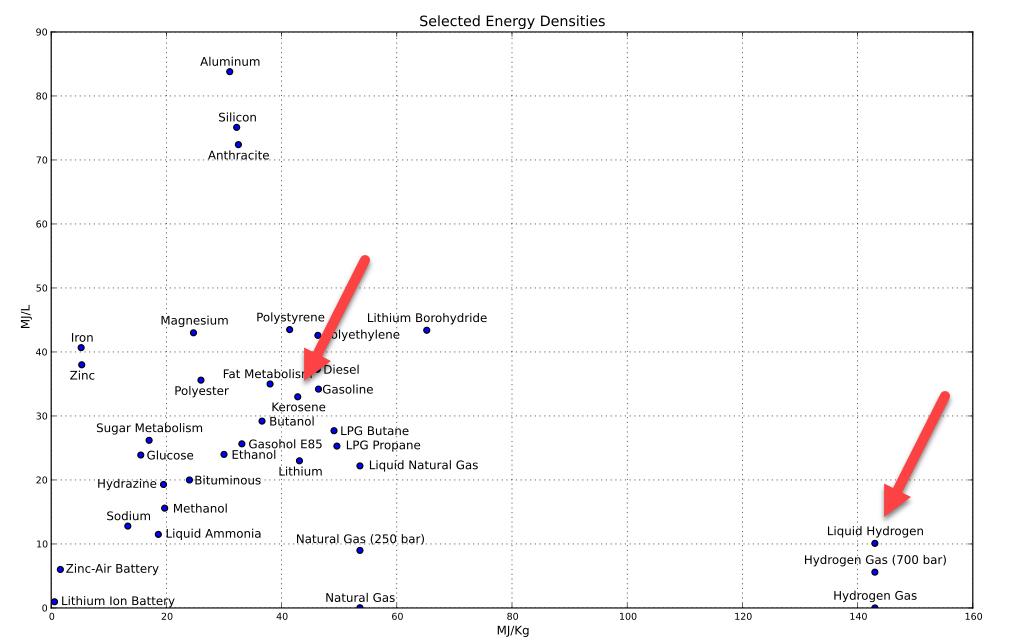First, to debunk a myth regarding the Hindenberg, which always gets brought up whenever hydrogen is mentioned. Hydrogen is less safe than liquid fuel, but it is not less safe than natural gas or propane. Hydrogen has a higher flame propagation velocity than hydrocarbon gasses, but contains much less energy per unit volume than hydrocarbon gasses. A huge airship filled with natural gas would be just as hazardous as a huge airship filled with hydrogen, yet we have natural gas pipework running to our houses and with proper controls there are very few incidents.
Nevertheless, hydrogen is not a good fuel for aircraft for the following reasons.

(Source: Wikipedia)
Above shows that hydrogen contains about 142MJ/kg of energy compared with about 42MJ/kg for kerosene. However it contains a lot less energy per unit volume. Liquid hydrogen contains only 10 MJ/litre while kerosene contains 33MJ/litre. Therefore hydrogen fuel tanks would need to be more than 3 times the size of kerosene fuel tanks. Gaseous hydrogen at atmospheric pressure would occupy hundreds of times more space, while hydrogen at 700bar is only about a factor of 2 worse than liquid hydrogen, but the weight of a vessel for holding 700bar pressure would negate the weight advantage of hydrogen.
Therefore the most practical way of storing hydrogen in an aircraft would be in the liquid state, as is used in spacecraft such as the Space Shuttle. Use of hydrogen would result in some weight savings and hence fuel savings. However the fuel tanks would be so big that the savings would be partially negated by the the additional drag (not to mention the additional weight of the larger tanks.)
Hydrogen is expensive to produce and liquefy. Most hydrogen is produced by reforming natural gas and steam into hydrogen by the reaction CH4 + 2H2O = CO2 + 4H2, which is a highly energy intensive process. Therefore, although a hydrogen fuelled plane might consume less energy than a kerosene fuelled plane, this does not take into account the energy used in the process of producing and liquefying the hydrogen, nor the cost involved in doing so. Overall, hydrogen fuel is likely to be more expensive.
Hydrogen is also more difficult to handle. hydrogen tanks are never perfectly insulated, so hydrogen boils off, and the tanks ice up. It is also, more hazardous than liquid fuel if a spill occurs, as it will evaporate and create an explosive mixture in air (though, as I have said above, this issue also applies to natural gas.) Liquid hydrogen is much colder than liquefied natural gas, and so creates more problems with materials, boiloff and icing.
Industrial gas turbines can run on hydrogen without too much modification. But with the extensive certification procedures for aviation, modifying an aircraft engine for hydrogen will be quite costly. Also the faster flame velocity of hydrogen means that NOx is more difficult to control and this is likely to cause problems with emissions regulations.
In conclusion, the only way hydrogen is ever going to be viable in the aviation industry in general is if it turns out to be easier to use in a fuel cell driven craft than a hydrocarbon fuel.
If economically feasible, a fuel cell / electric motor drive would be more efficient than a combustion jet engine. That said, the practical and safety issues mean that the aircraft industry will be one of the latest adopters of such technology.

